CdP
13 June 2011
It was all rather sudden. L was invited and I had no intention of going. L said he wouldn’t go without me. But Shakti Himalaya, the organisation which invited him, decided to get me along too. It wasn’t long before I caved in. Peter C waded in with his memories of a trip there in what must have been the very soon after the region was first opened up to tourism in 1974. It had been the thought of leaving Peter alone in the potentially busiest time in Spello which had most made me resist the thought of going. With him telling me it was an opportunity not to be missed, how could I go on saying no?
Ladakh is essentially that bit of India which is a continuation of Tibet: the locals look Tibetan; the language is basically Tibetan; the Buddhism practised there is the same as across the border; Leh, the capital, is full of Tibetan exiles selling Tibetan goods; and the altitude is just as challenging.
With annual rainfall of not much more than ten centimetres, Ladakh counts as a desert – a high-altitude one with most of the region lying above 3000m. It gets so cold that it can’t even snow. And it is more or less closed off to the world except in May-September when you can struggle up there, gasping for breath.
For someone like me with a green and leafy soul, Ladakh takes some easing into. Any vegetation is limited to a thin strip along the rivers Indus and Zangskar and even there, only where conditions allow. The idea of a river running through an utterly mineral landscape is somehow disturbing: I still carry the image in my mind.The people are so smiley-sweet (they have lived their whole lives with insufficient oxygen, of course…) and the pace so slow that it takes a while to realise the extreme sense of purpose in whatever green there is. No tree, for example, seems to be planted without an end in mind. Poplars stand in serried ranks around fields, packed in tight so that they provide a windbreak and grow fast and straight and tall, reaching for the sun with an absolutely minimum of space for leaf development: these are roof beams. Some willows are allowed to grow arm-thick and straight for cross-beams; others are coppiced to provide the three-centimetre thick bits which span the cross beams or form a thick insulating layer beneath packed-mud roofs. There are immense apricot trees and gnarled apples. And something, mostly around the monastery at Alchi, which may have been Phytolacca dioica though I wouldn’t swear to that. Certainly, highly polished and carved window frames and other house ornaments are a sign of prosperity in Ladakh, so they would have to obtain laquer from somewhere. On the other hand, I see that Phytolacca can’t bear temperatures much below five degrees, and it goes merrily down to minus 30 there. I will have to check that one out.
In the fields, the situation is equally precise. The growing season is ludicrously short but the numbers of people you see labouring in the fields seems illogically tiny. Yet even at the end of May, all the cultivated areas were showing signs of an emerging barley crop – hardly a green haze above 4000m, but already rippling lower down the valley at 3000. Tiny patches in each garden, surrounded by a prickly armor of criss-crossed sticks, were a minuscule nursery for cabbages and lettuces and various other hard-to-identify greens; at one of the houses we stayed in, the owners were busy putting the last of last year’s potato crop into the ground. The seedlings are planted out into beds which are long and thin, and often sub-divided into smaller plots by tiny walls of piled-up earth. Between the earth-bordered beds run long channels for water. One powerful person in each village doles out the water, which is almost exclusively melt-water from the surrounding mountains. It flows along channels between properties, and into each owner’s fields by turn. He – or she – opens the private ‘dam’ by pulling out the old sweatshirt and/or hacked-out top of a 44-gallon drum which blocks the flow. Then gradually the water is let into each strip or tiny plot, a breach made in the soil ‘wall’ to allow the water to inundate them one by one. The wall is rebuilt, the water flows on, then when that owner has had his lot, the property’s main obstacle is replaced and the water in the beds is left to sink in. I don’t think it’s a daily occurrence for each field, but each soaking is generous and thorough. I found the process fascinating and ageless – such perfectly balanced use of scant resources through the simplest kind of ingenuity.
Of course, our trip wasn’t all observation of nature and astute use of natural resources. It was much walking – once we had grown used to having little air to breathe – and some cycling (from the world’s highest drive-able pass at Khadung-la to Leh, the capital: 2500 straight down in two hours). L rafted along the Zangskar but I drew the line at that. Our amazing guide Pujan gave us prayer flags to string from high peaks and got monks to give us butter lamps to light in Thiksay monastery when we went there for early morning prayers – we dedicated it to C and her exams. We spun prayer wheels and chatted to locals. In one slightly surreal encounter, we invited ourselves into a spectacular vegetable garden where the owner, when Pujan told him I was a garden designer, started picking my brains for ideas on why the soil on one side of his makeshift greenhouse insisted on freezing when temperatures fell to minus 30. Why? Because it’s impossibly cold. I told Pujan to suggest that he tried planting through straw. You never know, it might help. But to be asked by a professional Ladakhi vegetable grower how to handle cold so extreme … quite quite odd.
Then back here to a garden which had exploded in ten days of heat and damp – vegetables not planted, a driveway of weeds, a half top-soiled orchard where the weeds have completely taken over that half which had already been beautifully smoothed, ready for seeding. Now I’m struggling to catch up, but not really knowing where to start.
And in the middle of it, I find myself with a new project: 200 square metres of extraordinary terrace in northern Rome to ‘green’. Refreshingly, my client told me straight up that I could show her all the plans I like but she won’t understand a thing – she needs something more graphic. So I’m doodling and sketching. It’s good to have an excuse to do it. I’m so bad at this but I do so enjoy it: taking out my big box of pencils and scribbling on blow-ups of pictures of the terrace.With Photoshop, I turn them black and white, and crank up the brightness until even the great tubs of builders’ rubble (which is all there is on the back terrace at the moment) fade to the point where I can sketch planters and plants over them.
It’s a huge space, awkwardly distributed in long thin areas; it needs a huge mass of greenery – anything less would look puny – in some pretty immense planters. I just hope the terrace will hold up under the weight. And of course I hope the client’s budget will hold up under the strain. But I think so.
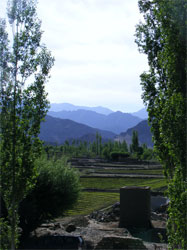
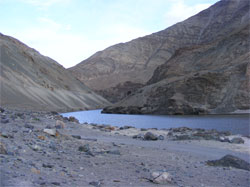
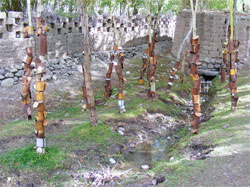
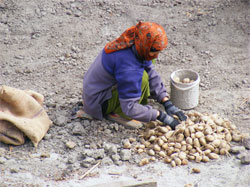
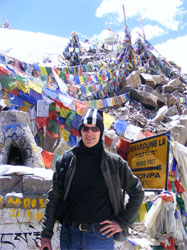
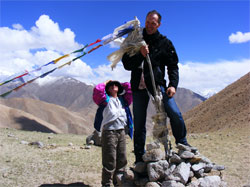
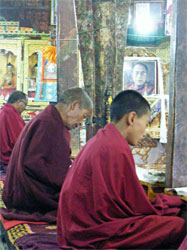
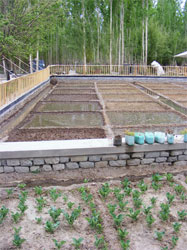
HOME